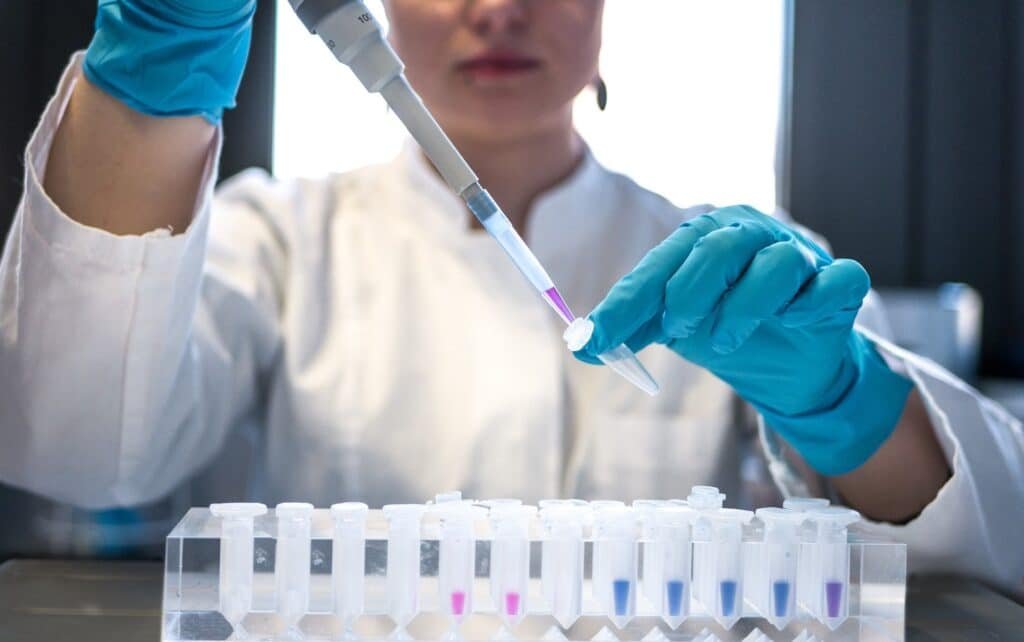
The importance of maintaining safety inside the lab is immense, but unfortunately, not many people pay attention to this. It can stop accidents from taking worse scenarios that are why here is a list of 6 lab precautions every lab must follow.
1. Give proper attire
Most labs fail to include this simple thing. Every lab must have a defined rule for the researchers/scientists to “enter only after wearing your PPE suit”. If followed diligently, injuries from accidents can be reduced by a massive percentage.
Researchers should be directed to enter only after wearing their full-sleeved long coats, closed-toe shoes, protective goggles. For people with long hair, it should be tied back in a ponytail or a bun.
Using these precautions will not only protect your skin and eyes in case of accidents it will also reduce the risk of contamination.
2. Not allowing any food or drinks inside the lab
It is quite common to see researchers binging on a cup of coffee and munching on a few sacks while working inside the lab. But this needs to be stopped.
Every lab should have a rule prohibiting bringing any kinds of drinks to the lab. Because there’s a huge possibility of contamination due to chemicals present on the tables and on hand.
In fact, everyone must properly wash their hands with a quality sanitiser before indulging in the work, as traces of chemicals and tissues can still contaminate places outside the lab too.
3. Establishing a procedure to dispose of waste safely
This is another area that lab researchers often tend to ignore. Don’t throw out plant waste into the sinks as it may lead to clogging up of drains, make sure they are dumped in disposable bins.
While disposing of chemicals, don’t drain them down the sink, instead, there must be a proper procedure to dispose of harmful chemicals. If these chemicals are left unused, ask the researchers not to pour them into the bottle again.
Also, there should be a protocol in the lab for disposing of sharp products such as razors, needles, broken glass. If it’s too hard to explain, always hand an instruction manual in front of the lab or get it printed.
4. Maintaining precaution while handling chemicals
In a survey, almost 30% of lab researchers confirmed that they have been part of an accident severe enough to warrant medical attention. That’s why it’s extremely important to maintain precaution while handling volatile chemicals.
Never sniff or taste the chemicals, make sure to read the name of the reagent before using it, put the bottle away from the hand and then gently pour or swirl it. Make sure no bottles are left without a stopper. All test tubes and dangerous chemicals should have a label on them so that everyone can recognize them.
5. Instructing what to do in case of fire
Lab accidents are bound to happen, but we can definitely take measures to minimize the damage. Lab researchers should be instructed properly on what they should do in case there’s a fire inside the room.
All inflammable chemicals must be kept in a fireproof container such as one from Labec and shouldn’t be left unattended. Always follow instructions while producing substances that are explosive in mature and for controlling fire, there should be at least three fire extinguishers installed inside the room.
All this should be enough to prevent a big disaster.
6. Maintaining distance while working with a partner
While it’s always good to have a partner while working, in labs, make sure to maintain a healthy distance.
An extra pair of eyes during the research can certainly help minimize mistakes but it’s a word of advice that while you are working only focus on the work and keep the chit-chat for later.
7. Handle equipment carefully
Apart from chemicals, there should be protocols for handling equipment properly. One should always use razor blades with caution, unplug hot plates, and switch off Bunsen burners.
If any electric rods are frayed, they should be looked after immediately. Broken glassware should not be handled casually and no one should ever use their hands to pick up the pieces. All the equipment should be put back at its designated place after use.
Over to you…
These were some of the most important tips that should be followed for ensuring maximum safety in labs, if you wish, you can always add more. Either way, precaution is always better than cure.
